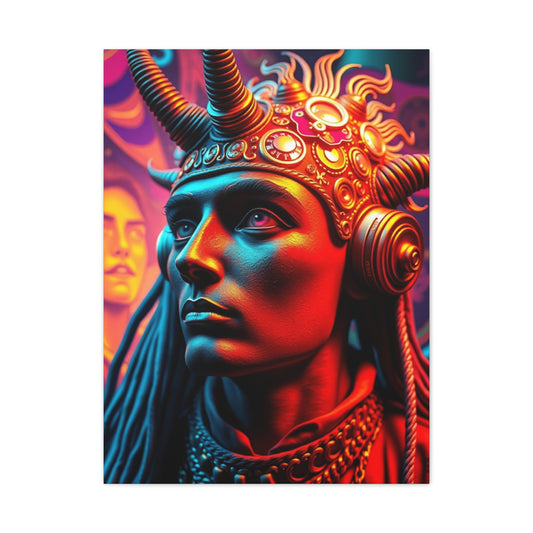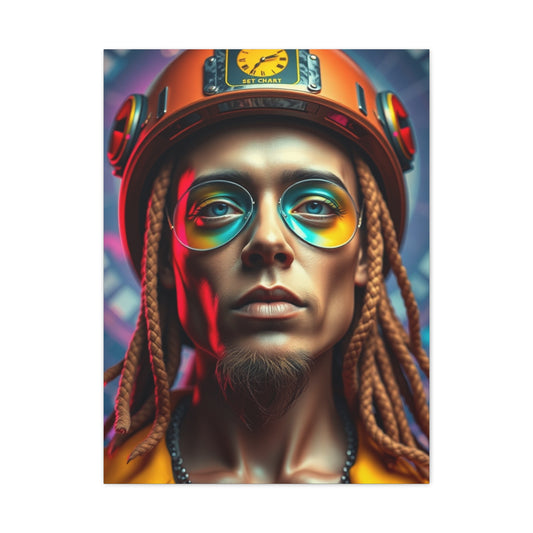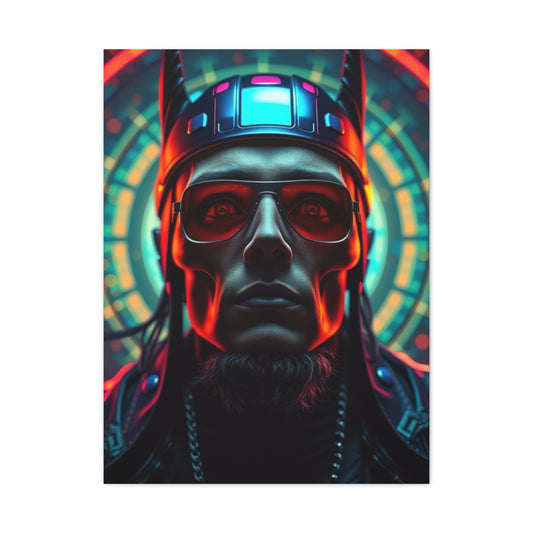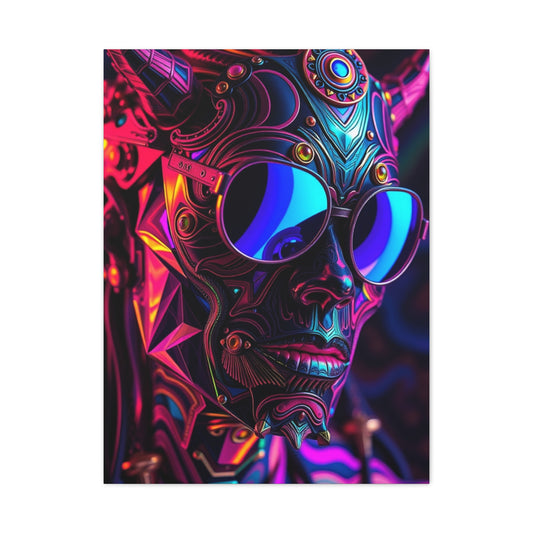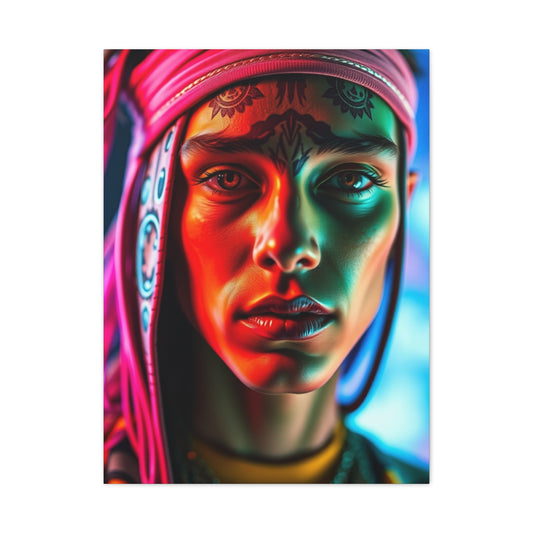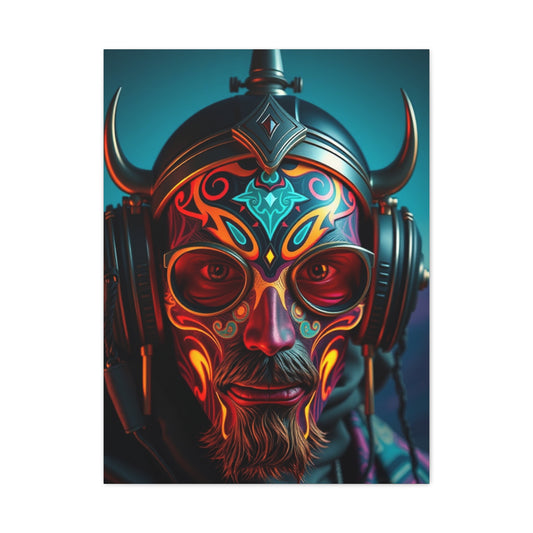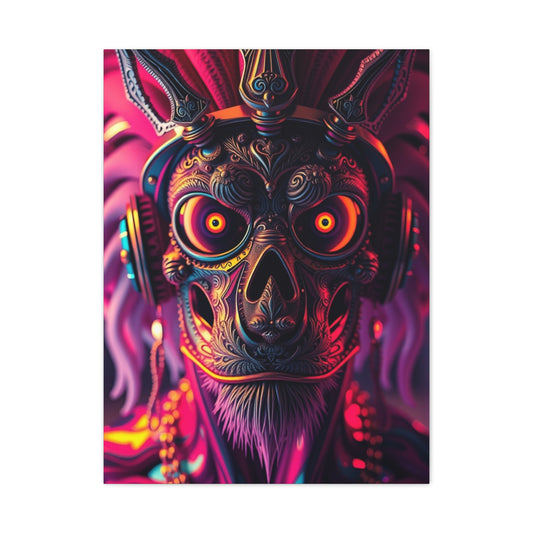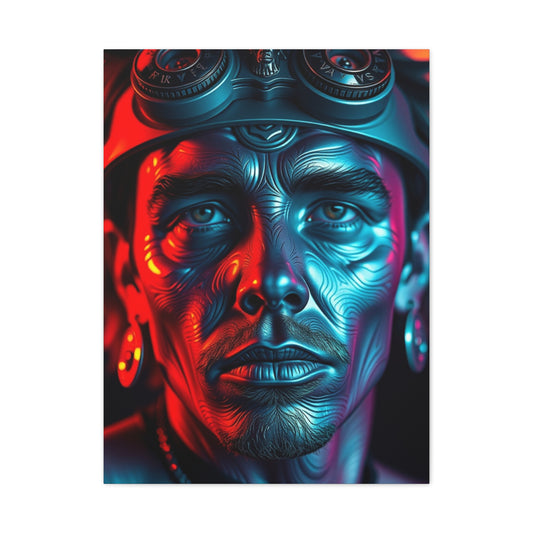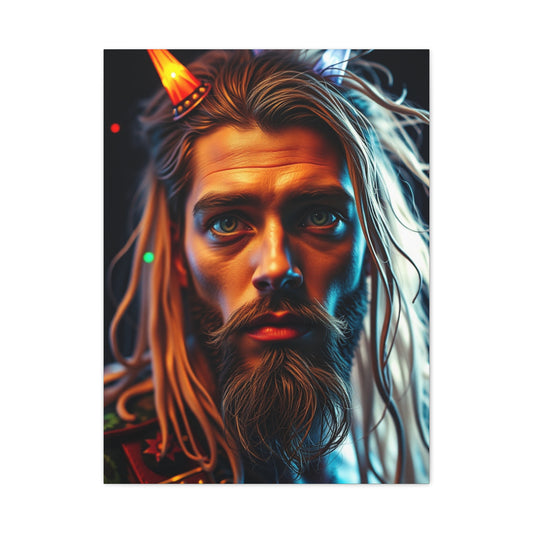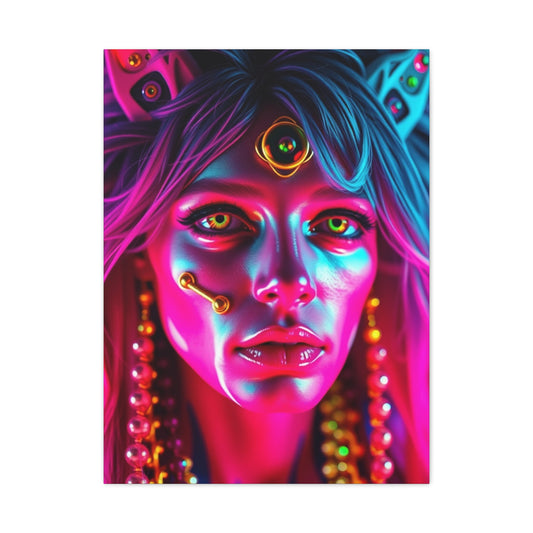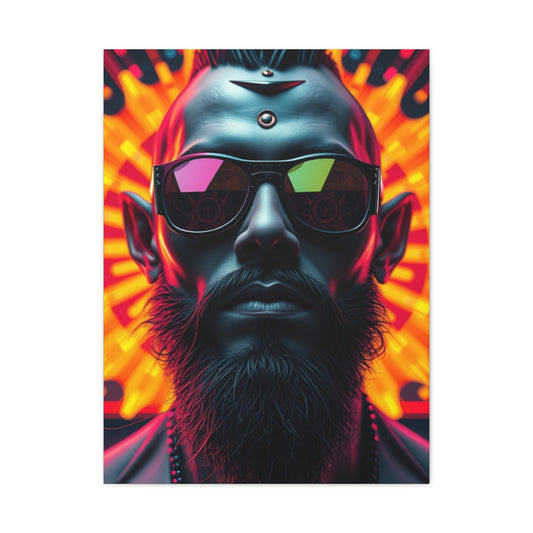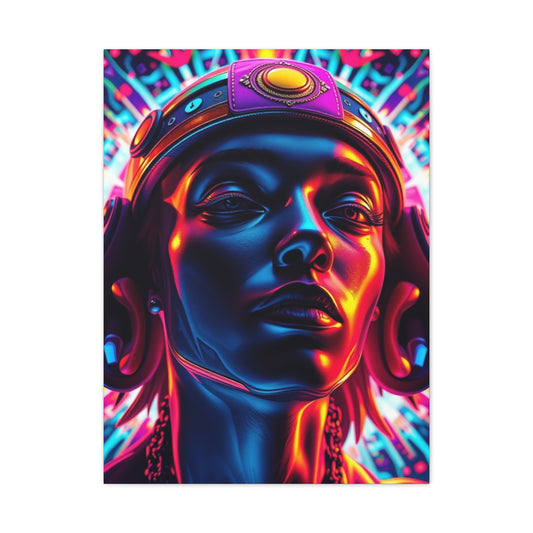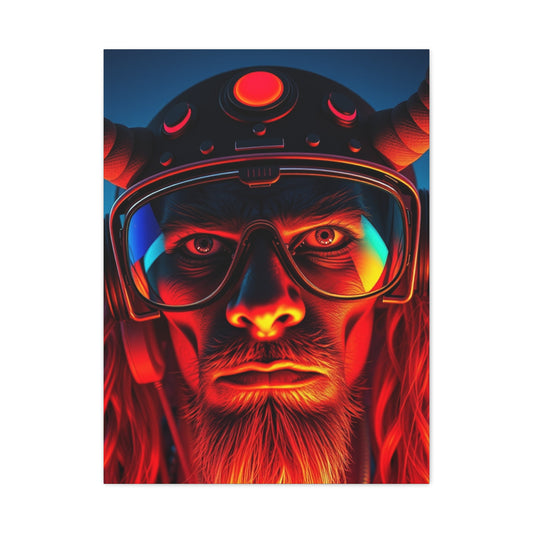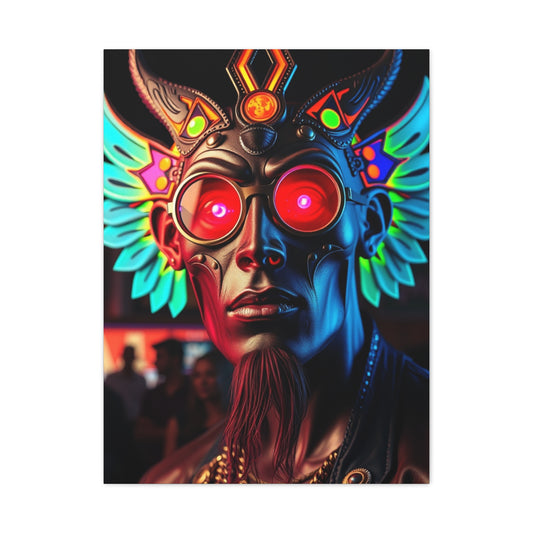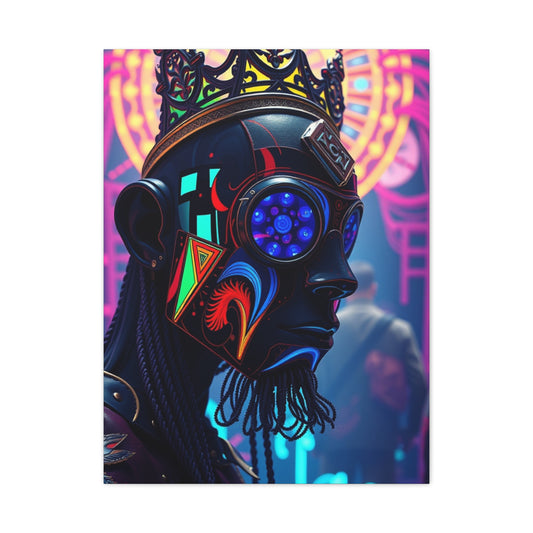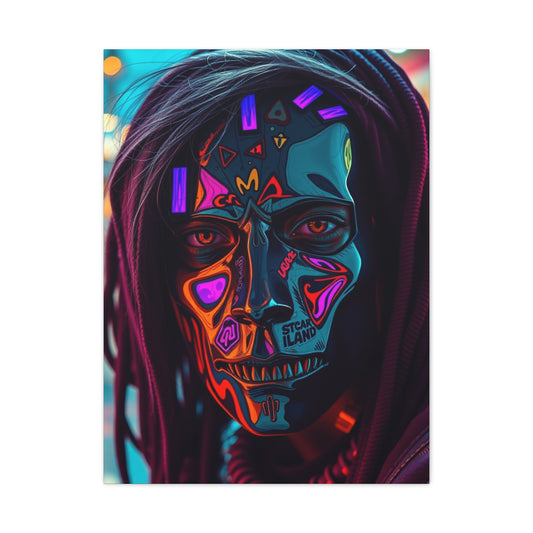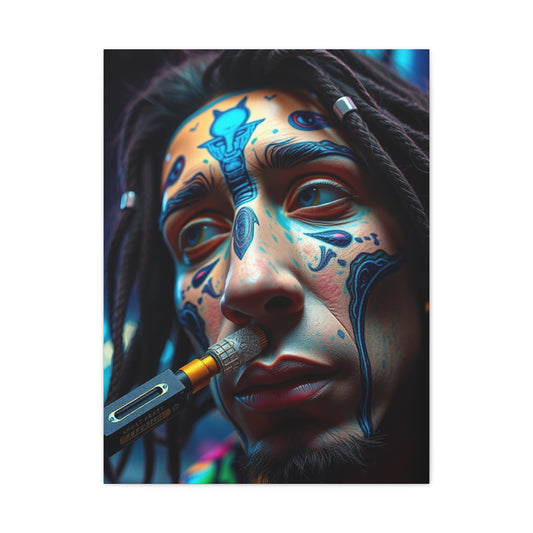Trippy Wall Art: Explore the Mind-Bending Universe of Surreal Creativity
Trippy art is a genre that captivates viewers with its mind-altering visuals, surreal landscapes, and intricate patterns that challenge conventional perceptions of reality. It is more than just visual art; it is an immersive experience that stimulates the imagination and provokes deep introspection. At its core, trippy art bridges the tangible world with the abstract universe of the mind, merging colors, shapes, and forms in ways that defy logical interpretation. The surreal nature of this art form invites viewers to engage with their subconscious, opening doors to new dimensions of creativity and awareness. Through the vibrant use of colors, distorted perspectives, and intricate designs, trippy art encourages individuals to see the world through an altered lens where imagination reigns supreme.
Trippy art is often described as hallucinatory or psychedelic because of its connection to altered states of consciousness. The interplay of bold hues, rhythmic patterns, and abstract forms creates a dynamic experience, often evoking a sense of movement or pulsation within static images. This transformative quality allows trippy art to resonate with a broad audience, from casual observers intrigued by visual spectacle to artists and psychologists studying the effects of immersive imagery on cognition and emotion. Its appeal lies in its ability to simultaneously attract and challenge viewers, prompting both aesthetic appreciation and cognitive exploration. The fascination with trippy art transcends time and culture, finding relevance in music, fashion, interior design, and even virtual spaces.
The Historical Origins of Trippy Art
The roots of trippy art can be traced back to the psychedelic art movement of the 1960s, a period marked by radical cultural, social, and artistic experimentation. Artists during this era sought to capture the visual essence of experiences induced by hallucinogenic substances, particularly LSD, psilocybin, and mescaline. These substances inspired profound shifts in perception, allowing artists to explore the mind’s hidden landscapes in ways that traditional art forms could not accommodate. The objective was not merely to replicate hallucinations but to convey the emotional and spiritual dimensions of altered consciousness. As a result, trippy art emerged as a visual vocabulary of the psyche, translating complex inner experiences into vibrant, intricate, and often surreal imagery.
The 1960s psychedelic movement was deeply intertwined with counterculture ideals. Artists, musicians, and writers collectively embraced experimentation as a pathway to personal and societal transformation. Psychedelic art became a visual companion to the music of the era, with album covers, concert posters, and light shows reflecting the same vivid, immersive aesthetic found in standalone artworks. Artists such as Rick Griffin, Stanley Mouse, and Victor Moscoso pioneered the distinctive style that would define the genre, integrating fluid lines, bold contrasts, and kaleidoscopic patterns that conveyed both movement and depth. Their work not only mirrored the sensory experiences of altered consciousness but also offered a critique of mainstream visual culture, pushing the boundaries of artistic convention and expression.
Characteristics That Define Trippy Art
Trippy art is distinguished by several defining characteristics that collectively create its immersive and surreal quality. One of the most prominent features is the use of vibrant, contrasting colors that evoke a sense of visual intensity and energy. Colors in trippy art are not used merely for aesthetic appeal but to stimulate the viewer’s perception and evoke emotional responses. Psychedelic color schemes often juxtapose complementary hues, creating optical illusions that suggest motion or depth where none exists. These color interactions can elicit a sensory experience akin to synesthesia, where colors are perceived as having tangible vibrational qualities or even as musical tones.
Another defining characteristic of trippy art is its reliance on distorted perspectives and abstract forms. Conventional rules of proportion, symmetry, and perspective are often disregarded, allowing shapes to bend, twist, or merge in ways that defy rational spatial understanding. This deliberate manipulation of form encourages viewers to question their perception of reality and engage with the artwork on a subconscious level. Trippy art frequently incorporates fractal patterns, repeating motifs, and flowing organic shapes that create a sense of infinite complexity and interconnectedness. These elements often mimic natural forms, from cellular structures and plant growth to celestial bodies and cosmic phenomena, establishing a link between the microcosm and macrocosm.
Influential Artists and Their Contributions
The evolution of trippy art has been shaped by numerous visionary artists whose work has left a lasting imprint on the genre. Salvador Dalí, though not a psychedelic artist in the traditional sense, exemplified the fusion of surrealism and psychological exploration that would influence later trippy aesthetics. His melting clocks, dreamlike landscapes, and bizarre juxtapositions challenged conventional notions of time, space, and reality, opening avenues for experimental visual expression. Similarly, H.R. Giger introduced dark and biomechanical imagery that merged organic and technological forms, creating immersive worlds that were both unsettling and mesmerizing.
The contributions of psychedelic artists like Alex Grey, Rick Griffin, and Stanley Mouse further defined the visual language of trippy art. Alex Grey’s work explores the intersection of human anatomy, spiritual energy, and cosmic consciousness, creating intricate and luminous representations of the human experience. Rick Griffin and Stanley Mouse, in contrast, captured the cultural zeitgeist of the 1960s counterculture, producing concert posters and album covers that visually translated the music and ethos of the era. These artists collectively demonstrated that trippy art could simultaneously serve as a personal, spiritual, and cultural expression, bridging the gap between individual consciousness and collective imagination.
The Influence of Trippy Art on Popular Culture
Trippy art has had a profound and lasting influence on popular culture, extending far beyond the confines of galleries and exhibitions. Its impact is particularly notable in music, where the psychedelic aesthetics of album covers and stage visuals became inseparable from the auditory experience. Iconic works, such as the album cover of Pink Floyd’s “The Dark Side of the Moon” or The Beatles’ “Sgt. Pepper’s Lonely Hearts Club Band,” exemplify how trippy art visually amplifies the thematic and emotional content of music. Beyond music, the visual motifs of trippy art have influenced fashion, film, video games, and interior design, contributing to a broader aesthetic vocabulary that celebrates imagination and creativity.
The proliferation of digital technology has further expanded the reach of trippy art. Digital artists now utilize software, virtual reality, and interactive installations to create immersive experiences that engage multiple senses simultaneously. These contemporary approaches continue to honor the foundational principles of trippy art while exploring new frontiers of expression. The integration of traditional techniques with digital innovation allows artists to craft dynamic, interactive environments where viewers can participate in the art itself, blurring the lines between observer and creator. As a result, trippy art remains a vibrant and evolving cultural phenomenon that resonates with audiences across generations.
Different Media Used in Trippy Art
Trippy art is not confined to any single medium. Artists have explored painting, drawing, sculpture, digital art, and multimedia installations, each offering unique possibilities for visual expression. Painting remains a popular medium, allowing the artist to experiment with color, texture, and layering techniques that create depth and movement. Acrylics and oils provide vibrant, lasting colors, while watercolors offer a fluidity that complements the organic, flowing shapes characteristic of trippy art. Drawing, often using ink, pencil, or markers, allows for intricate line work, patterns, and fractal designs that convey complexity and optical illusions.
Sculpture introduces a three-dimensional element to trippy art, transforming abstract patterns and forms into tactile, spatial experiences. Sculptors can manipulate materials such as clay, metal, and resin to create shapes that twist and bend in surreal ways, inviting viewers to engage from multiple angles. Digital art has revolutionized the genre, offering limitless possibilities for experimentation. Using software and digital tools, artists can generate animated sequences, manipulate colors with precision, and create immersive experiences through virtual reality or interactive installations. Multimedia installations often combine sound, light, and motion with visual art, creating environments that envelop the viewer and enhance the sensory and emotional impact.
Techniques for Creating Trippy Artwork
Creating trippy art involves a combination of techniques that manipulate perception and evoke a sense of altered reality. One widely used approach is the layering of patterns and shapes. By overlapping organic forms, geometric motifs, and fractal designs, artists generate a sense of depth and movement that seems to shift as viewers change their perspective. Repetition and symmetry are also essential techniques, with mirrored images, radial patterns, and kaleidoscopic effects creating a hypnotic quality that draws the eye and stimulates the imagination.
Color theory is fundamental in trippy art. Artists carefully select complementary, contrasting, or analogous color schemes to evoke emotional responses and create optical illusions. High-saturation hues, neon colors, and gradient transitions enhance the intensity of visual perception, making patterns appear to vibrate or glow. Light and shadow manipulation further amplifies the three-dimensional effect, giving flat surfaces an illusion of depth. Additionally, distorted perspectives, exaggerated proportions, and warped spatial relationships disrupt conventional visual expectations, encouraging viewers to engage with the artwork on a subconscious level.
Texture and detail play a critical role in enhancing the immersive quality of trippy art. Fine lines, stippling, and crosshatching contribute to the intricacy of the composition, while bold strokes and sweeping motions create dynamic energy. Artists may also experiment with mixed media, incorporating materials such as metallic paints, reflective surfaces, or transparent layers that respond to light and movement. These techniques collectively transform the artwork into a multi-sensory experience, blurring the line between perception and imagination.
Contemporary Trippy Artists and Innovations
Contemporary trippy artists continue to push the boundaries of creativity by combining traditional artistic methods with modern technology. Alex Grey, renowned for his visionary works, explores the intersection of human anatomy, spirituality, and cosmic consciousness, creating luminous representations of energy fields and the inner workings of the mind. Android Jones, a digital pioneer, uses virtual reality, motion capture, and advanced software to craft interactive, immersive experiences that allow viewers to explore surreal worlds in three dimensions.
Other notable contemporary artists include Carey Thompson, whose digital and mixed-media pieces feature psychedelic portraits and abstract landscapes, and Allison Sommers, who integrates neon colors and fractal geometry into her paintings and installations. These artists demonstrate the versatility of trippy art, showing how it can evolve across mediums while maintaining its core principles of altered perception, vibrant color, and intricate patterning. The digital age has expanded the reach and impact of trippy art, enabling artists to share their work with global audiences and collaborate across disciplines.
Therapeutic and Psychological Effects of Trippy Art
Trippy art has been recognized for its potential therapeutic benefits. Engaging with these works can evoke mindfulness, reduce stress, and stimulate creativity. The immersive, otherworldly quality of trippy visuals allows viewers to momentarily escape from routine or anxiety, promoting mental relaxation and emotional catharsis. Studies in art therapy suggest that creating or observing visually complex and colorful art can enhance cognitive function, improve mood, and provide a non-verbal outlet for self-expression.
The repetitive patterns and fractal designs common in trippy art can have meditative effects. Viewers may experience a sense of rhythm or flow as their eyes follow intricate forms, similar to the calming effects of mandalas or other meditative imagery. This process can help individuals focus attention, slow cognitive chatter, and promote introspection. Furthermore, trippy art can inspire creativity and problem-solving by encouraging the brain to perceive relationships, forms, and patterns in unconventional ways.
How to Create Your Own Trippy Art
Creating trippy art can be both a personal and experimental process. Artists are encouraged to explore a wide range of media, from traditional paints and inks to digital software and 3D modeling tools. The first step is to experiment with shapes, patterns, and colors, allowing intuition and imagination to guide the creative process. Starting with simple sketches or digital drafts helps establish a visual framework, which can later be developed into complex, layered compositions.
Incorporating organic forms and natural motifs often enhances the psychedelic quality of the artwork. Spirals, fractals, waves, and plant-like structures resonate with the viewer’s subconscious, creating a sense of interconnectedness. Color selection is crucial, with bold, high-contrast combinations intensifying visual impact. Techniques such as blending gradients, overlaying textures, and manipulating light and shadow contribute to the illusion of depth and movement. Distorted perspectives, warped spaces, and surreal juxtapositions further amplify the hallucinatory effect.
Experimentation with digital tools allows for interactive and animated elements, enabling viewers to experience the artwork in dynamic ways. Virtual reality platforms, augmented reality applications, and projection mapping offer opportunities to immerse audiences in three-dimensional trippy environments. Mixed-media approaches that combine sound, motion, and light can also create multi-sensory experiences, reinforcing the emotional and psychological impact of the art.
The Role of Trippy Art in Modern Culture
Trippy art continues to influence contemporary culture in diverse ways. In music, album covers, stage design, and visuals for live performances often incorporate psychedelic aesthetics to enhance audience engagement. In fashion, patterns and motifs inspired by trippy visuals appear in clothing, accessories, and textiles, reflecting the ongoing fascination with surreal, mind-bending imagery. Film and television also draw inspiration from the genre, with visual effects, set design, and animation incorporating elements of trippy art to convey altered states or imaginative worlds.
Interior design has increasingly embraced trippy wall art as a means of transforming spaces. Large-scale prints, murals, and framed artworks create immersive atmospheres that stimulate conversation and reflection. Trippy art is valued not only for its aesthetic appeal but also for its ability to alter the emotional tone of a room, infusing it with energy, creativity, and a sense of wonder. The popularity of trippy visuals in digital spaces, including social media and virtual galleries, further underscores their relevance in contemporary culture.
Exploring the Visual Language of Trippy Art
Trippy art communicates through a distinct visual language that combines abstraction, color, form, and pattern to evoke emotion and stimulate the imagination. This language often transcends verbal expression, relying instead on visual cues that speak directly to the subconscious. The interplay of vibrant colors, intricate patterns, and surreal compositions conveys experiences that are at once intensely personal and universally recognizable.
Color is perhaps the most immediate and striking component of this visual language. Trippy art often utilizes high-contrast, saturated, and neon colors to create a sense of movement, depth, and energy. The juxtaposition of complementary or discordant colors can generate optical effects that appear to shimmer or pulse, producing a visual experience that mimics the intensity of altered perception. These color choices are rarely arbitrary; they are intended to elicit emotional responses, guide the viewer’s eye through the composition, and enhance the hallucinatory quality of the work.
Patterns and textures also play a central role in the visual language of trippy art. Fractals, spirals, waves, and repeated motifs create a sense of rhythm and continuity, engaging the viewer’s attention and inviting exploration. These elements often draw inspiration from natural forms, such as plant structures, celestial bodies, and microscopic organisms, reflecting a fundamental fascination with the interconnectedness of life and the cosmos. By layering multiple patterns and textures, artists generate complexity that encourages prolonged engagement and introspection.
Trippy Art and Perception
Trippy art has a profound impact on perception, challenging the way viewers interpret visual stimuli. Distorted perspectives, warped spatial relationships, and surreal compositions encourage the brain to recognize alternative ways of seeing the world. This deliberate manipulation of perception fosters heightened awareness, curiosity, and cognitive flexibility. Viewers are prompted to question assumptions about reality and explore the boundaries between the tangible and intangible.
Optical illusions are frequently employed in trippy art to further engage perception. Through techniques such as repetition, symmetry, and contrast, artists create the illusion of movement, depth, and transformation within static images. These effects can produce a sense of visual rhythm, where shapes seem to shift, vibrate, or morph before the viewer’s eyes. The resulting experience is immersive, capturing attention and fostering a meditative state in which the mind can wander freely, exploring imaginative possibilities without restriction.
The Intersection of Trippy Art and Spirituality
Many artists and viewers perceive a spiritual dimension in trippy art. The intricate patterns, vibrant colors, and fractal designs often evoke a sense of cosmic unity, inner harmony, and transcendence. This art form can function as a visual meditation, guiding the observer toward heightened awareness and introspective reflection. The connection between trippy art and spiritual experience is evident in the work of visionaries such as Alex Grey, whose luminous depictions of energy fields, chakras, and human anatomy illustrate the interconnectedness of mind, body, and spirit.
Trippy art often incorporates symbolic elements drawn from diverse spiritual traditions. Mandalas, sacred geometry, and celestial motifs appear frequently, emphasizing themes of balance, infinity, and the cyclical nature of existence. By engaging with these visual symbols, viewers may experience a sense of expansion and connection beyond the material world. This intersection of art and spirituality highlights the capacity of trippy art to serve not only as aesthetic expression but also as a vehicle for self-discovery, contemplation, and personal transformation.
Trippy Art in Music and Performance
The influence of trippy art on music and performance culture is profound and enduring. From the psychedelic rock era of the 1960s to contemporary electronic music festivals, trippy visuals enhance the sensory experience of sound, creating immersive environments where music and imagery intersect. Album covers, concert posters, stage designs, and visual projections all employ trippy aesthetics to complement musical expression.
Live performances often integrate trippy visuals to produce a multisensory experience. Projection mapping, LED installations, and animated sequences transform performance spaces into dynamic, immersive environments. The synchronization of visuals with music amplifies emotional impact, evokes altered states of consciousness, and encourages audience participation in the creative experience. Artists and performers recognize that trippy visuals are not merely decorative; they are integral to shaping perception, atmosphere, and audience engagement.
The Role of Technology in Trippy Art
Technology has expanded the possibilities of trippy art, enabling artists to explore new forms of expression and interaction. Digital tools allow for unprecedented precision in color manipulation, pattern creation, and layering techniques. Software applications facilitate the creation of complex fractals, animated sequences, and interactive compositions that respond to viewer input. Virtual reality and augmented reality platforms provide immersive experiences, where audiences can navigate three-dimensional trippy worlds and engage with art in ways impossible with traditional media.
Interactive installations are a significant innovation in contemporary trippy art. By incorporating sensors, motion tracking, and responsive visuals, artists create environments that react to the presence and actions of viewers. These installations dissolve the boundary between observer and creator, transforming spectators into participants and co-creators of the artistic experience. Technology also enables global collaboration and distribution, allowing trippy art to reach audiences worldwide through online galleries, virtual exhibitions, and digital marketplaces.
Trippy Art in Film and Animation
Trippy art has also made a significant impact on film and animation, influencing visual storytelling, set design, and special effects. Directors and animators utilize psychedelic aesthetics to represent altered states of consciousness, dream sequences, and surreal narratives. The use of color, pattern, and distortion in visual effects can evoke emotional intensity, enhance narrative symbolism, and immerse viewers in imaginative worlds.
Classic films such as those produced during the counterculture era incorporated trippy visuals to create surreal atmospheres, while contemporary animated works continue to draw inspiration from the genre. The flexibility of animation allows for limitless exploration of form, color, and movement, providing fertile ground for trippy creativity. Through these mediums, trippy art extends beyond static imagery, shaping experiences that combine visual, auditory, and narrative elements to create a comprehensive sensory journey.
The Psychology of Trippy Art
Psychologists and cognitive scientists have long studied the impact of trippy visuals on the brain. The combination of vivid color, pattern, and distortion stimulates visual processing areas, enhancing engagement and promoting neural plasticity. Experiencing trippy art can evoke a range of emotional responses, from awe and wonder to introspection and contemplation. The immersive quality of the artwork encourages sustained attention, promoting mindfulness and reducing cognitive distractions.
Engagement with trippy art can also facilitate emotional catharsis. The abstract and surreal nature of the images allows viewers to project personal experiences, fears, and desires onto the artwork, providing a safe and imaginative outlet for emotional exploration. This process can foster self-awareness, creative problem-solving, and emotional resilience. By bridging conscious and subconscious thought, trippy art offers a unique avenue for psychological and emotional growth.
Collecting and Displaying Trippy Wall Art
Trippy wall art offers a unique way to transform living spaces, creating immersive environments that captivate the imagination. Collecting trippy art allows individuals to curate personal galleries that reflect their tastes, experiences, and emotional responses. When selecting pieces, it is essential to consider factors such as scale, color palette, and thematic content. Larger pieces with bold patterns can serve as focal points in a room, while smaller works may complement existing décor or create a layered visual narrative.
Displaying trippy art requires careful consideration of lighting, wall color, and spatial arrangement. Proper lighting enhances color vibrancy, highlights texture, and accentuates intricate details. Natural light can bring out subtle color shifts, while artificial lighting allows for controlled emphasis on specific areas of the artwork. The choice of wall color can either harmonize with or contrast against the artwork, influencing the overall mood and impact. Arranging multiple pieces in a curated composition can create rhythm, balance, and cohesion, inviting viewers to engage with the space as a dynamic visual journey.
Advanced Techniques in Trippy Art
For artists seeking to push the boundaries of trippy wall art, advanced techniques involve integrating multiple layers of visual information and exploring the interaction between color, pattern, and form. Layering transparent and semi-transparent elements can create depth, allowing viewers to perceive hidden structures and subtle visual relationships. Experimentation with fractal geometry, kaleidoscopic effects, and optical illusions enhances the immersive quality, encouraging prolonged engagement and exploration.
Digital tools enable the creation of dynamic compositions that respond to movement, light, and interaction. Artists can animate patterns, manipulate perspective, and integrate generative algorithms that produce evolving visuals. Mixed-media approaches, combining painting, digital projection, and sculpture, expand the possibilities further. These techniques allow trippy art to exist in multiple dimensions simultaneously, transforming static walls into interactive and evolving visual landscapes.
The Role of Trippy Art in Interior Design
Trippy wall art has become increasingly influential in interior design, offering both aesthetic and experiential benefits. Its vibrant colors, intricate patterns, and surreal imagery can alter the perception of space, adding energy, movement, and depth. Designers often use trippy art to create focal points, define zones within open spaces, or introduce visual intrigue in minimalist environments.
Incorporating trippy wall art into residential and commercial spaces encourages creativity, inspiration, and engagement. Offices, studios, and creative hubs benefit from the stimulating effects of immersive visuals, while homes can transform into environments that evoke reflection, imagination, and emotional connection. The integration of trippy art into interior design demonstrates its versatility, bridging the gap between personal expression and functional aesthetic.
Trippy Art as a Tool for Mindfulness and Meditation
Engaging with trippy wall art can serve as a form of mindfulness and meditative practice. The complexity of patterns, repetition of forms, and interplay of colors draw attention and focus, allowing the viewer to fully immerse in the visual experience. This focused observation can reduce stress, promote relaxation, and foster emotional clarity.
Meditative exercises involving trippy art may include slow visual exploration, guided interpretation of patterns, or creative interaction through sketching or digital manipulation. By observing and reflecting on the intricacies of the artwork, individuals cultivate heightened awareness, enhance perceptual sensitivity, and develop a deeper appreciation for the interconnectedness of visual elements. Trippy art becomes both a tool and a practice, merging aesthetic engagement with psychological and emotional enrichment.
Trippy Art in Digital Spaces and Virtual Reality
The digital age has expanded the reach and impact of trippy art, allowing immersive experiences that go beyond traditional media. Virtual reality platforms provide three-dimensional environments where viewers can navigate surreal landscapes, interact with animated patterns, and experience visual narratives from multiple perspectives. Augmented reality overlays trippy visuals onto physical spaces, blending real and imagined dimensions to create hybrid experiences.
Online galleries, social media platforms, and digital marketplaces enable global access to trippy wall art, fostering appreciation, collaboration, and innovation. Artists can share interactive pieces, experiment with algorithmically generated patterns, and engage audiences in participatory experiences. Digital and virtual platforms have democratized trippy art, allowing diverse voices and styles to contribute to the evolving aesthetic landscape.
The Therapeutic Potential of Creating Trippy Art
Creating trippy art offers profound therapeutic benefits, serving as a form of self-expression, stress relief, and emotional exploration. The process encourages experimentation, improvisation, and engagement with subconscious imagery. Artists may begin with abstract shapes, spontaneous line work, or color exploration, gradually developing intricate compositions that reflect internal states, emotions, and imaginative visions.
Engaging in trippy art can enhance cognitive flexibility, problem-solving, and creative thinking. The act of translating abstract thoughts into visual form strengthens neural pathways associated with perception, pattern recognition, and spatial reasoning. Therapeutic exercises may include guided creation sessions, mindful observation, or collaborative projects where participants co-create immersive environments. Through these practices, trippy art becomes a conduit for self-discovery, emotional resilience, and holistic well-being.
Contemporary Trends and the Future of Trippy Wall Art
Contemporary trippy wall art continues to evolve, integrating new technologies, interdisciplinary approaches, and cultural influences. Artists increasingly incorporate interactive elements, generative algorithms, and multisensory components to create dynamic and responsive environments. Collaboration across mediums, including music, sound design, performance, and installation art, expands the possibilities for immersive experiences.
Future trends suggest continued experimentation with augmented reality, artificial intelligence, and biofeedback integration. These innovations will allow artworks to respond to viewer emotions, physiological signals, and environmental changes, creating personalized and evolving experiences. Trippy art will remain a vital form of cultural expression, blending aesthetic, psychological, and technological dimensions to engage audiences in transformative ways.
Conclusion:
Trippy wall art offers more than mere visual pleasure; it serves as a gateway to exploration, creativity, and introspection. By immersing oneself in its vibrant colors, intricate patterns, and surreal forms, viewers are invited to journey beyond the ordinary, to expand their perception, and to challenge ingrained assumptions about reality. Each piece of trippy art operates as an open invitation to view the world through a lens of imagination, allowing the observer to momentarily transcend the constraints of conventional thought and experience a reality that is both fluid and dynamic.
Historically, the origins of trippy art can be traced to the psychedelic movement of the 1960s, a period when artists sought to capture the mind-altering experiences induced by consciousness-expanding substances. The era was marked by experimentation, rebellion against traditional norms, and an insatiable curiosity about the nature of human perception. Artists of the time explored the interplay of color, form, and rhythm, creating works that reflected the inner workings of the mind rather than the external world. Their intention was not only to produce visually striking imagery but to provoke reflection, stimulate thought, and invite viewers into a participatory experience with the artwork. This historical foundation set the stage for trippy wall art as a medium that transcends simple decoration; it became a visual representation of the subconscious, a bridge between imagination and reality.
The essence of trippy wall art lies in its ability to engage multiple senses simultaneously. The swirling patterns, kaleidoscopic hues, and fluid shapes encourage viewers to perceive movement and depth even in static images. This interplay between color and form creates a visual rhythm that can evoke a sense of motion, energy, and transformation. Such artwork often defies linear interpretation, requiring the observer to embrace ambiguity and uncertainty, which in turn stimulates cognitive flexibility and creativity. Engaging with trippy art can enhance one’s awareness of subtle details, textures, and contrasts, fostering a deeper appreciation for both complexity and harmony in visual compositions.
In the contemporary context, trippy wall art has evolved to incorporate digital innovations, expanding the possibilities of what the medium can achieve. Digital platforms allow artists to experiment with dynamic visuals, animated patterns, and immersive installations that respond to viewers’ movements or interactions. These advancements have broadened the accessibility and appeal of trippy art, making it possible for individuals to encounter these mind-expanding experiences not only in galleries but also in homes, virtual spaces, and public installations. The convergence of technology and creativity has ushered in a new era of interactive visual experiences, where the observer is no longer a passive participant but an integral part of the artwork itself.
The thematic diversity within trippy wall art is vast, encompassing elements of nature, cosmic imagery, abstract forms, and fantastical creatures. Artists often draw inspiration from fractals, mandalas, and other naturally occurring patterns, highlighting the intrinsic harmony and complexity present in the universe. The use of bright, contrasting colors evokes emotion, while distorted or surreal forms challenge the viewer’s preconceived notions of space and reality. Through these imaginative expressions, trippy art encourages introspection, allowing individuals to confront personal thoughts, dreams, and fears in a visual context. In this way, the artwork becomes a mirror of the mind, reflecting both the conscious and unconscious dimensions of human experience.
Engaging with trippy wall art offers multiple layers of value. On a purely aesthetic level, it adds vibrancy, depth, and character to any space, transforming ordinary walls into portals of wonder. On a cognitive level, it stimulates the brain by encouraging the recognition of patterns, the exploration of symmetry and asymmetry, and the interpretation of abstract imagery. Emotionally, it can provoke awe, curiosity, or nostalgia, evoking feelings that are often difficult to articulate. The immersive quality of trippy art makes it uniquely capable of producing a meditative or reflective state, similar to the experience of mindfulness or focused contemplation. It invites the viewer to pause, observe, and engage with their own perceptions, fostering a sense of presence and awareness.

